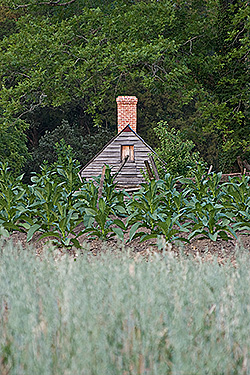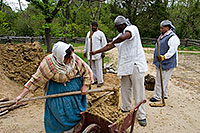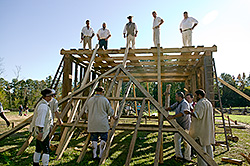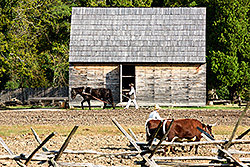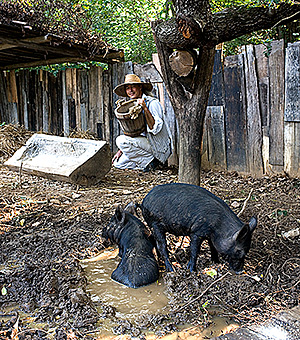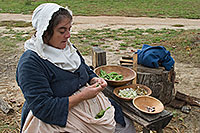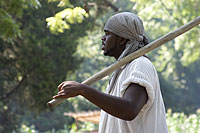Page content

Panoramic view of Colonial Williamsburg’s Great Hopes Plantation.
Great Hopes Plantation
The Countryside
About 2,000 people lived in Williamsburg at the time of the American Revolution in the 18th century. Though small by today’s standards, it was urban, with streets, residences, shops, public buildings, and other aspects of town life. Most Virginians, however, lived in the country. Male and female, young and old, Native American, European American, and African American, their lives were rural ones, centered on agriculture, and shaped by the land, the climate, the season, and the institution of slavery. To understand Colonial Virginia, and to put the lives of the townspeople of Williamsburg in perspective, we need to know a bit about what it was like to live on one of the many farms that surrounded the town. Compared to the great plantations, most of these were modest, owned by farmers “of the middling sort” or of even more modest means.
Great Hopes Plantation
Great Hopes Plantation is a re-creation of one of these family farms. It did not exist on this site in the 18th century, but its landscape, buildings, animals, and the work and lifestyles of its inhabitants are based on extensive research into small farms in three neighboring counties.
The Buildings
The farm’s buildings include a kitchen, smokehouse, corn house, well, and tobacco house. A log house is the residence of the farm’s slaves. The planter’s dwelling house — a small, three-room frame building — is slated for construction.
The Fields
Tobacco was the most important crop of the Tidewater region of Virginia. Its sale provided the cash needed to support the farm and its inhabitants. During the mid-18th century, wheat gradually emerged as another cash crop. Corn was important as food. Ground into meal, grits, or hominy, it was the mainstay of everyone’s diet. Two gardens, one for the planter’s family and one set aside for slaves, provided vegetables and herbs.
The Livestock
Hogs and cattle free-ranged on fallow ground and woodland rather than in pastures. Poultry ran free in the farmyard. Gardens, crop fields, and orchards were fenced to keep livestock from roaming into them. Oxen were the primary draft animals and used for heavy work like plowing and logging. Horses were kept for both travel and light work. While modern requirements prohibit us from letting the animals run free, Great Hopes has a representative group of livestock, many of them rare breeds.
To See and Do
Farming in the 18th century was hard, never-ending work. It required knowledge and skills that most of us today have never experienced. Much was tending crops, gardens, and livestock, but there also were the constant domestic tasks involved in feeding and clothing everyone, housekeeping, and raising families. To find out more about this life and the people who experienced it, check out the links below.

